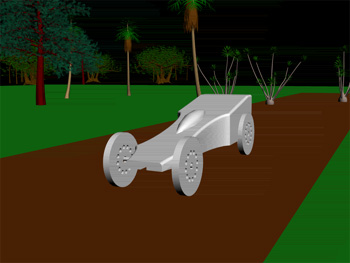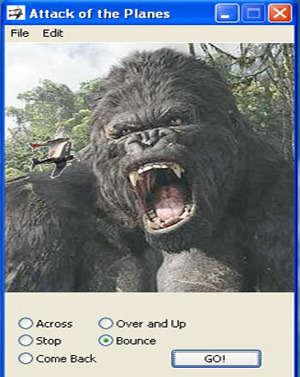Technology Systems
| During the first semester, students in Technology Systems begin an exploration of technological simulations using the Geometer's Sketchpad software by Key Curriculum Press. Using the construction and transformation features of GSP, the students must create animations that simulate a series of amusement park rides. The animations must simulate the motion that rides such as the Double Ferris Wheel, Scrambler, Viking undertake in normal operation. To conclude the project, the students must build a working physical model of their favorite ride using Erector Set and Vex robotics parts. Upon completion of this project, the students will move on to 3D modeling using the parametric software Pro/Desktop 8.0 by PTC. After an introduction to 3D modeling, the students will begin development of a CO2 car. This activity is modeled after the F1 in Schools project. Students who complete a 3D model of a CO2 car will perform an analysis of aerodynamics using the Virtual Wind Tunnel Software. The students will then go back to the 3D modeling software and make changes based upon the analysis. |  |
 |
During second semester, students will generate a tool path using QuickCAM 3D, which will allow for milling in the department's CNC router. Because access to the Denford CNC machine is limited, the students will continue milling their cars throughout the 2nd semester. After a brief introduction to 3D animation, the students will import the model of their CO2 car into the 3DsMax animation software. They must develop an simulation of their car traveling across the screen with the wheels actually moving. They will then bring the different camera views into a movie editor in which they will add music and sound effects.Near the end of the semester, the students will have a race of their CO2 cars to test which one truly is the best design. The students will finish up their exploration of simulation with an introduction to computer programming using the program REALBasic. They will design a computer program that will simulate various types of motion often found in computer games that simulate reality. The students will learn how to get input from the user via the keyboard, how to generate random numbers, and how to incorporate multiple objects in a sprite animation. They will also learn how to use rendered 3D objects from parametric software into their software programs. By the end of the course, the students will have all of the tools necessary to create their own interactive computer game. To view a promotional video for this course, click here. |